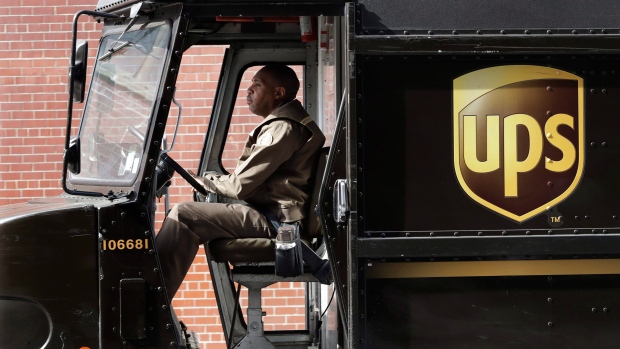Apr 26, 2018
More parcels, higher prices lift UPS profit, but costs soar
, Reuters

NEW YORK - United Parcel Service Inc reported higher first-quarter net profit on Thursday, driven by strong package volumes in its core U.S. domestic segment, but higher costs from Saturday delivery and nasty winter weather weighed on operating results.
The world's largest package delivery company, viewed as an indicator of economic strength, reported revenue increased 10 per cent to US$17.1 billion in the first quarter from a year ago, topping analyst expectations of US$16.47 billion.
Revenue at its core U.S. domestic package service rose 7.2 per cent to US$10.2 billion from a year-ago, driven by a 4.6 per cent rise in package volumes fueled by the growth of online purchases.
However, severe winter weather dragged down its operating profit by $85 million, as did higher expenses for network improvements, higher pension costs, and the big expansion of Saturday delivery over the last year. Operating profit in its core domestic segment plummeted 20 percent, and was down 6 percent overall.
Shares were flat in pre-market trade.
The company spent US$1.5 billion in the quarter on network improvements like new technology and automating its parcel sorting hubs, and maintained its 2018 spending plan of between US$6.5 billion to US$7 billion.
Atlanta-based UPS and rival FedEx Corp have spent billions of dollars upgrading networks to handle surging e-commerce package volumes, weighing on margins and leaving investors frustrated over the expense.
The rapid rise in online shopping has been a boon for shipping demand, but UPS has struggled to bring down the extra costs of making more, smaller deliveries to households, compared to businesses that receive more parcels at once.
The investments show UPS is betting that if it can handle more volume it can increase the number of packages it delivers to households, and eventually improve profitability, versus pushing for higher prices and less volume, analysts say.
Revenue per parcel delivered rose just 2.6 per cent, as higher prices and fuel surcharges offset the higher costs associated with delivering packages bought online, the company said.
UPS posted first-quarter net income of US$1.35 billion or US$1.55 per share, up from US$1.17 billion or US$1.33 per share a year earlier, a 17 per cent rise on a per share basis.
Analysts expected earnings per share of $1.54.


